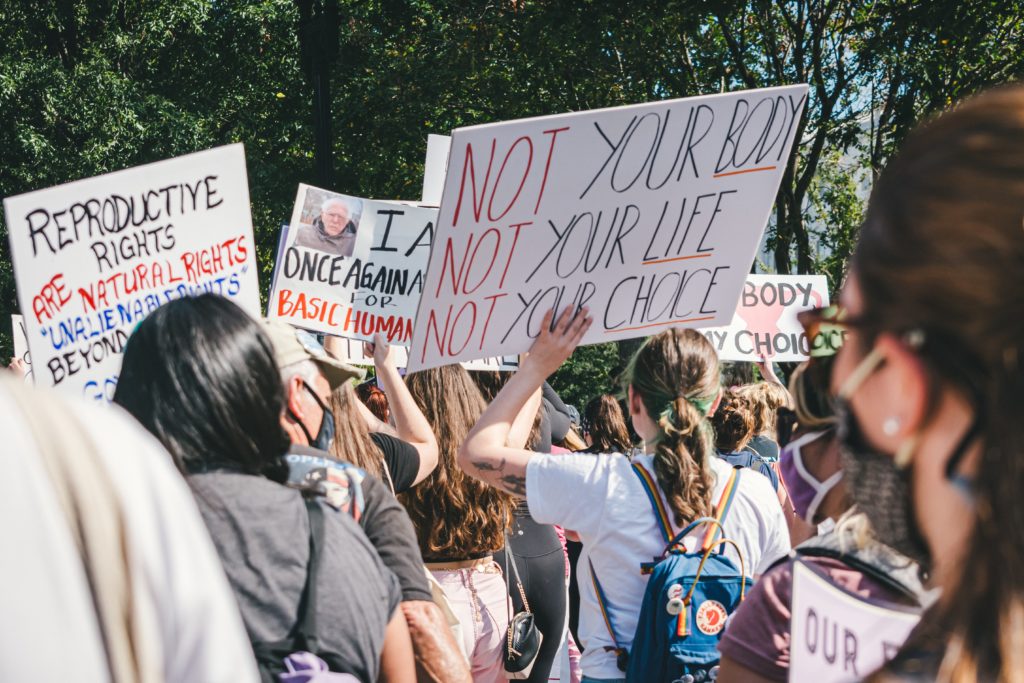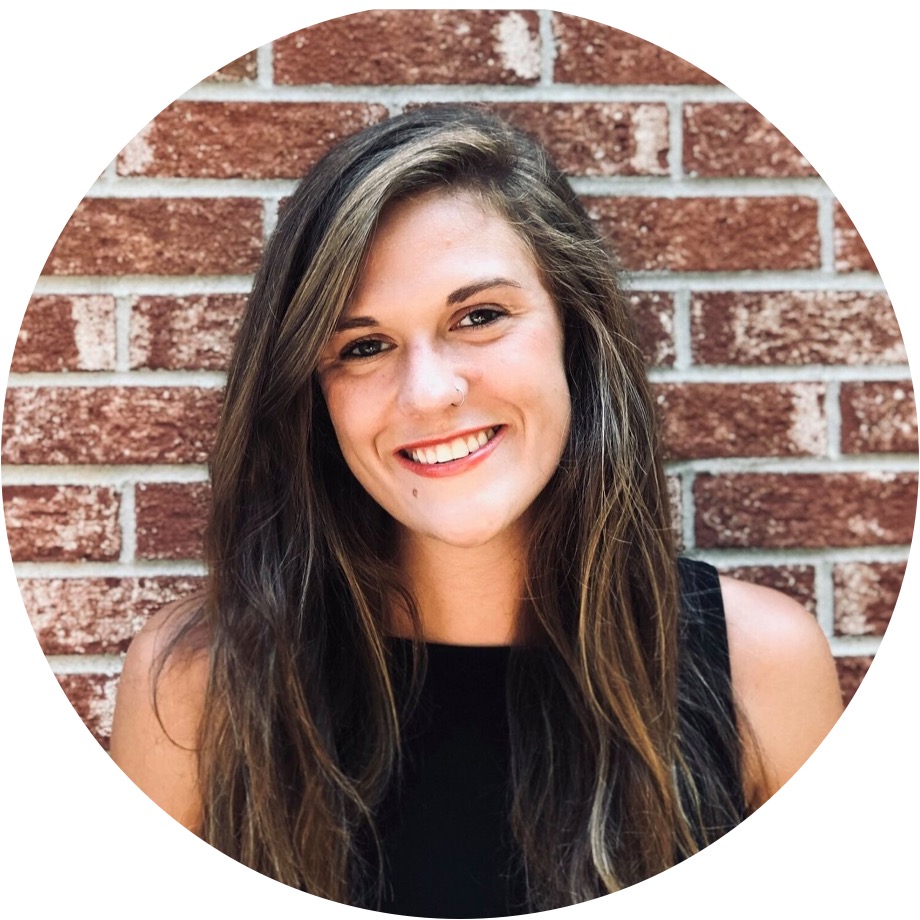
Crisis Pregnancy Centers:
How Evangelical Purity Culture Funded Thousands of Anti-Abortion Clinics
Victoria Houser
This article is part of our “Kennedy, Carson, and Dobbs: Law and Religion in Pressing Supreme Court Cases” series.
If you’d like to check out other articles in this series, click here.
Crisis Pregnancy Centers (CPCs) have periodically received attention in mainstream media outlets for their religious affiliations and anti-abortion positions. This past week, Abigail Abrams and Vera Bergengruen released an article in Time magazine outlining the insidious rhetoric these clinics use to attract pregnant people seeking abortions. They claim to offer free counseling and pregnancy tests. Once inside the clinic, the person seeking medical advice will instead be handed information about the trauma and pain of abortion. Abrams and Bergengruen point out that CPCs now use some form of “pregnancy care center” in their name to avoid being recognized as one of the overtly anti-abortion clinics.
When the first CPC was founded by Robert Pearson in 1967, there was no such nuance. In fact, the manual that Pearson wrote for those interested in founding a CPC was titled How to Start and Operate Your Own Pro-Life Crisis Pregnancy Center. Activists and scholars have pointed out places in the text where Pearson explicitly states that these centers do not need to provide correct information about abortion and pregnancy because people seeking abortions are “killers” used by Satan and have thus renounced their rights to medically sound information.
It might seem like the easy option is simply to avoid these clinics. So what makes them compelling to a wider audience? Because the clinics receive federal funding through welfare acts with provisions like Community Based Abstinence Education (CBAE) grants, they are able to offer pregnant people access to free ultrasounds, sonograms, and consultations. CPCs target low-income, uninsured pregnant people by promising them community medical care. Of course, they do not offer free childcare in their efforts to “support” pregnant people, but they do offer plenty of misinformation about the emotional, mental, and spiritual risks of abortion. In this essay, I provide some historical context for how these clinics rose in popularity and garnered significant amounts of funding between 1990 and present day with the hope of illustrating paths for resistance in our current post-Roe world.
Purity: The Pro-Life Campaign’s Largest Asset
Even though CPCs began to emerge around the same time Roe vs. Wade was passed, they did not have a large funding base until the 1990s, when abstinence-only education in public schools became a hotly contested issue for the United States public. As the religious right fought continuous pushback against their effort to promote abstinence-only education in schools nationwide, they found another outlet for sending these messages: purity pledges. Most people became familiar with purity culture through celebrities wearing purity rings and publicly sharing personal celibacy journeys. These stories sparkled in the news for a few weeks, but with the exception of a few major stories, the rise of evangelical purity culture remained largely untouched by mainstream news outlets.
That began to change in 1994, when over 210,000 young adults gathered on the National Mall to publicly declare vows of chastity until marriage. Two years later, purity pledgers stacked 340,000 signed pledges in the Atlanta Dome as a demonstration advocating for the cause of sexual purity. In 1995, True Love Waits, the religious organization with a mission to promote chastity, garnered 2.2 million abstinence pledges. Organizations like True Love Waits and Silver Ring Thing were initially formed as a private, counter-public alternative for abstinence-only education, and they quickly grew in numbers, shifting the concerns of purity from a private, personal choice to a public, social declaration. For evangelicals, the outward expression of sexual purity is about much more than abstaining from sex — it carries moral and political implications about sexual identity, family values, and pro-life narratives.
For evangelicals, the outward expression of sexual purity is about much more than abstaining from sex — it carries moral and political implications about sexual identity, family values, and pro-life narratives.
Sexual morality has always been a concern for evangelicals, but the messages from the most recent purity movement emphasized sexual chastity as an act that promised individual agency as well as personal and collective prosperity. In Virgin Nation: Sexual Purity and American Adolescence, Sara Moslener explains that the evangelical purity movement situated sexual purity as “a venue rife with possibilities for personal transformation, national revitalization, and, quite possibly, the salvation of American civilization.” Contemporary purity rhetorics challenged young adults (specifically white, middle-upper class, cisgender, heterosexual women) to choose “counter-cultural” lifestyles through the public performance of chastity — signing purity pledges, dressing modestly, avoiding flirtatious behaviors, and eventually marrying a godly spouse and reproducing. The circulating messages of sexual purity as a form of spiritual fulfillment reinforced pro-life messages encouraging young white, cis-gendered, heterosexual women to reproduce even in scenarios where they were considering abortion. With the purity movement bolstering pro-life narratives as integral to experiencing life to the fullest, religious pregnancy centers gained significant traction across the U.S.
Determining a “Crisis”: Inside Anti-Abortion Pregnancy Centers
In early 2004, after passing the CBAE act, President George W. Bush declared that January 18 would be “National Sanctity of Human Life Day,” stating in his public address: “My Administration encourages adoption and supports abstinence education, crisis pregnancy programs, parental notification laws, and other measures to help us continue to build a culture of life.” CPCs qualified for funding from the CBAE because the pregnancy centers encourage abstinence-only practices and discourage using contraception — two beliefs rooted deeply in evangelical purity doctrine. By 2010, CPCs outnumbered abortion clinics, with 1,969 CPCs to the 327 abortion clinics in the U.S. As of 2022, there are over 2,500 CPCs in operation. Many of these centers are in areas without abortion clinics.

As I researched the 32 operating CPCs in the state of South Carolina, I noticed that almost all of them contained messages about abortion causing severe trauma. Many of the centers’ websites also included information for men interested in helping their pregnant partners navigate their “choices.” Radiance Women’s Center, located in Beaufort, South Carolina, includes a unique blend of these two themes: “Did you know that surgical and later term abortions are also associated with an increased risk of emotional/psychological complications such as depression, anxiety, and relationship difficulties? Women are not the only ones who may be in distress after abortion: Men can suffer too.” Many other centers contain similar messages across their platforms, creating a rhetoric of crisis around abortion and then offering alternative, “life-giving” choices through their counseling.
Fueled by anti-abortion rhetoric, CPCs have added over five hundred new clinics nationally in the last two years, and they continue to expand in resources and accessibility. As mentioned above, most centers have rebranded their organizations as “pregnancy care centers” or “women’s health centers,” to make the centers more rhetorically appealing to women seeking abortions. In efforts to help identify and dismantle the harm caused by these centers, Drs. Andrea Swartzendruber and Danielle Lambert have created a map of religious anti-abortion pregnancy centers which identifies fake clinics. The site also includes scholarship and information about CPCs for those interested in learning more about the history and harm of these centers.
In the wake of Roe being overturned, it is critical to protest and resist the harm caused by CPCs.
In the wake of Roe being overturned, it is critical to protest and resist the harm caused by CPCs. Part of this resistance requires deeper consideration about the effects of purity culture in the U.S. It is tempting to believe that large religious organizations have always taken anti-abortion positions, but this is still a fairly recent political turn. Randall Balmer explains that in the 1970s, the Southern Baptist Convention (home to 47,000 churches) openly supported abortion rights, stating in their 1971 resolution that abortions should be allowed in instances of mental, emotional, or physical damage to the woman. The SBC reaffirmed this stance in 1974 and 1976. Even though the SBC is perhaps the last place we should look to for hope for reproductive rights now, its history reveals that it is possible to rethink the religious elements that have begun to dictate the rights to our bodies, and I believe this reimagination is where our work lies. ♦

Victoria Houser is an Assistant Professor of English at Methodist University. Her research centers on religious rhetoric with specific attention to gender, sexuality, reproductive justice, and religious trauma.
Recommended Citation
Houser, Victoria. “Crisis Pregnancy Centers: How Evangelical Purity Culture Funded Thousands of Anti-Abortion Clinics.” Canopy Forum, July 8, 2022. https://canopyforum.org/2022/07/08/crisis-pregnancy-centers-how-evangelical-purity-culture-funded-thousands-of-anti-abortion-clinics/

